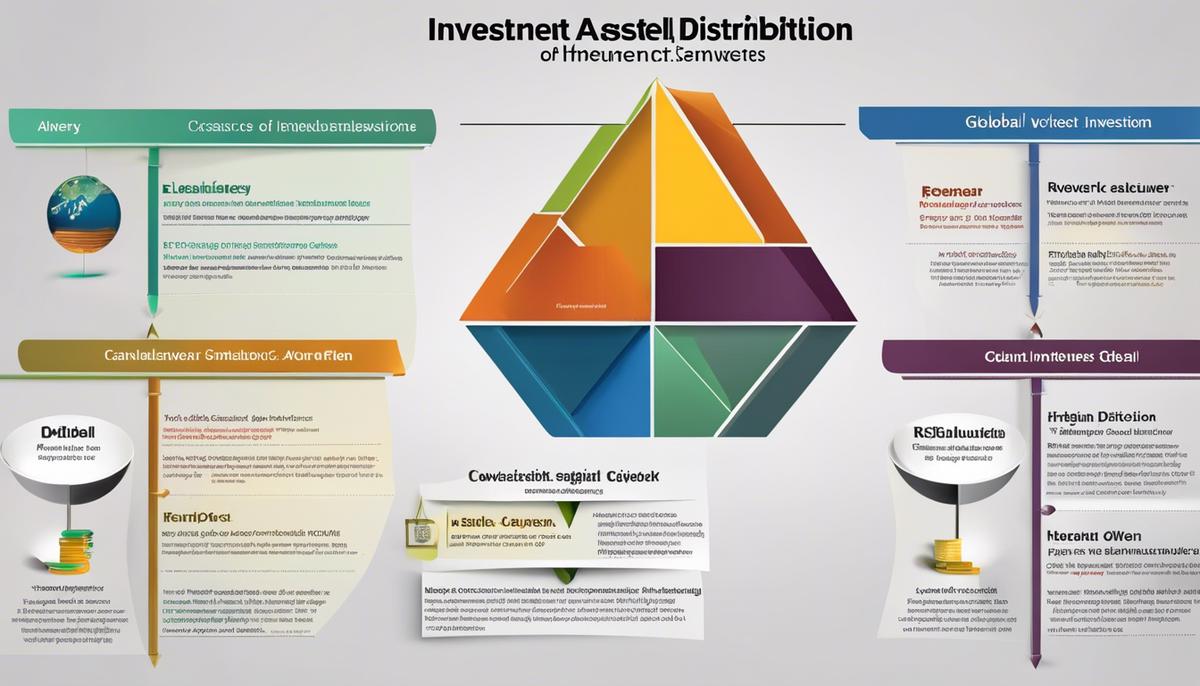As the world of finance continues to evolve at an unprecedented pace, the ability to make informed investment decisions is a crucial skill. The world of investing can be complex, with an overwhelming amount of options and a myriad of factors influencing their performance. This piece aims to simplify this complexity by introducing you to the fundamental principles of investing, starting with an overview of basic investment instruments such as stocks, bonds, and funds. Further, we will explore how to use the power of compounding and achieve a balance between risk and returns. Choosing the right brokerage also plays a vital role in your investment journey, hence, understanding various types of brokerages is essential.
Understanding Investment Basics
Heading: Essential Fundamentals Every First-Time Investor Should Know
Every entrepreneur starts somewhere, and for those uninitiated in the finance world of investing, it can appear like an arcane labyrinth. Enigmatic terminologies, volatile market dynamics, and an overwhelming array of investment options can potentially intimidate a first-time investor. However, beaming with ingenuity, smart entrepreneurs approach investing with the same renegade spirit that guides their successful business ventures. Here are some critical fundamentals every first-time investor should know.
First and foremost, understand the golden rule of investing – don’t invest what you can’t afford to lose. This rule is the safety net that cushions the fall if the claws of the volatile market succeed in snatching up some of your hard-earned money.
Secondly, diversification is key. A mastering ability at creating diverse business portfolios is a skill that successful entrepreneurs and investors alike cherish and hone. Distribute your investments across different asset classes like equities, real estate, bonds, and commodities to minimize risk and maximize returns. Diversification is your defensive move in the grand chessboard of investment.
Thirdly, acknowledge the power of compounding. Commonly known as the “eighth wonder of the world,” compounding helps mount small investments into significant wealth over time. Start investing early and regularly to reap the benefits of this powerful financial tool.
Fourth, deliver some seriousness to research. Successful investing, like fruitful entrepreneurship, demands considerable time investment in research. Be it company reports, market trends, or expert analyses; arm yourself with as much knowledge as possible before plunging your money into the investment pool.
Next, learn to ride the market fluctuations. Market volatility can be your worst enemy or best friend, depending on your perspective. Developing a robust emotional resilience will help you weather the peaks and troughs of the investment cycle without panicking.
Finally, always keep an eye on expenses. From brokerage fees to load fees, the cost of investing can eat into your profits significantly if not monitored regularly. Just as a mindful entrepreneur trims excess operational costs, a savvy investor should be wary of possible financial leakages in investing.
Investing seems daunting initially, but once the basics are mastered, it unravels as an exhilarating domain. First-time investors can use the same innovative mindset that has powered their business successes to navigate the complex world of finance. It’s all about making the right moves at the right time with the right knowledge. March ahead with conviction, fortitude, and nous, just like you do in every business venture.

Photo by lulusphotography on Unsplash
Asset Allocation and Diversification
To begin the journey of effective investment distribution, one cannot ignore the significance of asset allocation. This refers to how one splits their investment portfolio among different asset classes such as stocks, bonds, and cash. Allocation should largely depend on one’s financial goals, risk tolerance, and investment time frame. Historical trends suggest that stocks offer high growth potential, while bonds offer steady income and cash offers utmost safety. Navigating these categories adeptly can be instrumental in striking the right balance between risk and return.
Another crucial aspect of investment distribution is investing globally. While it might seem daunting, it provides a chance to capitalize on opportunities in evolving markets across the world. With the internet easing international transactions, the world is truly an investor’s oyster.
Actively rebalancing one’s portfolio is also pertinent. Economic conditions change and so do the fortunes of industries and companies. These changes impact the asset allocation of one’s portfolio and may entail selling some shares and buying others to maintain the desired allocation.
Furthermore, the realm of alternative investments offers paths unexplored by traditional stock and bond investors. These include futures, options, real estate, commodities, and hedge funds. While they generally have a higher degree of risk, they provide a way to offset that risk by offering potential returns that are uncorrelated with traditional markets.
Investing in oneself is another fine investment distributed effectively. This could be obtaining additional education, certifications, or experiences that can open doors to better opportunities or higher paying positions. These investments can pay off tremendously in the long run.
Another valuable piece of the investment distribution puzzle, often overlooked, is estate planning. Possessing a well-thought-out plan ensures one’s assets can be distributed as per their wishes upon death. This includes drafting a will, setting up a trust for minors, and buying life insurance, all of which could also provide potential tax benefits.
Finally, for the savvy investor, it’s prudent to remember that patience pays. Successful investment is typically not about getting rich quick but waiting for the compounding of returns to do its magic. In addition, it’s vital to review one’s investment strategy regularly but also avoid tinkering with it excessively in response to short-term market fluctuations.
In brief, effective investment distribution necessitates clever strategizing, open-minded exploration, continual reevaluation, and characteristic patience. With these in one’s arsenal, the pursuit of financial stability and growth becomes an achievable endeavor rather than a daunting task.

Developing an Investment Plan
As a beginner stepping into the unpredictable but rewarding world of investing, a clear understanding and execution of your investment plan is the key to long-term success. Building upon essential aspects like investment you can afford to lose, diversification, the magic of compounding, research, emotional resilience, and cost management, it’s now time to delve into further strategies that will fortify your financial future.
Foremost, you must consider asset allocation, an investment strategy that aids in managing risk by distributing your investments across various asset categories such as stocks, bonds, real estate, and cash. The right balance will depend on your individual financial goals, risk tolerance, and investment timeline. The purpose of asset allocation isn’t to boost performance but to shield against extreme downsides.
Extending horizons beyond geographical boundaries is another beneficial step. Investing globally brings the advantage of diversification, as markets in different countries often move differently, and this can reduce potential losses. It allows participation in the growth of emerging economies that might be expanding faster than one’s home country.
Rebalancing the portfolio is a discipline that maintains the intended asset allocation over time. This requires selling assets that have performed well or are over-represented and buying more of those that have lagged, a practice that ingrains the habit of buying low and selling high.
‘Unconventional’ should not equate to ‘avoidable’ in your dictionary. As a robust investor, explore the potential of alternative investments like real estate, commodities, hedge funds, or private equity. These might provide unique opportunities for returns uncorrelated with traditional stock or bond markets.
Next, one of the greatest investments that yield a high return is investing in oneself. Building a knowledge-rich foundation helps you make better decisions, not just in finance but in life. Whether it’s enhancing your education, developing new skills, or expanding your network, it pays off exponentially in the long run.
While immersed in present investing, don’t forget about the future. Estate planning is an overlooked component that ensures your assets go to the intended parties after your death, without delays and unnecessary legal issues. Devising a solid estate plan, including items such as making a will, setting up trust accounts, or establishing power of attorney arrangements, brings peace of mind and security to your financial plan.
Lasty, recall that investing is a marathon, not a sprint. Patience is the key when dealing with the stock market. The market will fluctuate – there may be periods of substantial gains and some of losses. But remember, in the long run, the trend has consistently been upward.
While these won’t guarantee immunity against losses, these guiding principles represent the building blocks of a solid investment foundation. Learn from each experience, adapt, grow stronger, and keep exploring the endless opportunities this exciting financial world has to offer.

Investing, when well-planned, can potentially transform one’s financial condition and grant an elevated degree of financial freedom. It’s pertinent to have a panoramic view of your financial ambitions, the potential vehicles that can get you closer to those, and a well-crafted plan to employ these vehicles efficiently. Diversifying your investments across different asset classes, including equities, bonds, and cash, can offer a safety net against market volatilities whilst presenting avenues for pragmatic returns. In aestivating a fiscal blueprint to guide you, remember that the very foundation of this journey is fortified with knowledge, patience, and sometimes, the gut to take calculated leaps of faith.



